UDCD
A design decisions making framework in 4 steps:
Understand, Diverge, Converge, and Document.
"Without a practice, you’re just doing design — a short-term activity. But when you practice design, you’re focusing on long-term sustainable success."
Verne Ho
Whether you realize it or not, you are constantly designing.
Whenever you're making a decision that is part of a plan to achieve a goal, you are designing.
Programers plan how they should code, thus they design programs; Managers plan the way a team could work more efficiently, thus they design workflows; A job seeker might be planing the way he will reach his dream job, thus he designs his career;…
But once decisions are made, they need to be executed (actually code an algorithm, actually make a team work together, actually write a resume,…).
When we’re not directly executing our design decisions, then design is a lot about communication : how can we save and communicate these design decisions to other people (maybe people who will execute) or even to « our future selves » (because we’ll execute later, or because we’ll continue to design later… just because we think we’ll need the rationale behind those decisions at some point).
Design is about planing and communicating intent.
Here, we'll "only" talk about product design, the process of making and communicating decisions about how a product will behave, as a bridge between people and their goals on the user's side, and between a business and its goals on the company's side.
This design practice aims to enable these design decisions to be :
- Relevant : Decisions are focused on fulfilling the first use case
- Intentional : Decisions are made on purpose
- Conscious : Decisions are made with "the whole" and "the next" in mind
- Opportunistic : Decisions leverage all the opportunities to convey meaning
- Audacious : Decisions diverge from existing patterns when it makes sense
The practice is meant to guide design decision, not to constraint it.
It helps to start in the good direction, and to keep in mind important parts of the design journey.
We define 4 steps driven by their main purposes :
- Understand : Know the users, the product, the problem and the context.
- Diverge : Explore a broad range of solutions.
- Converge : Select a proposal and focus the work on it.
- Document : Review, and save important decisions.
For each step we'll provide clear goals, and some heuristics to assess the success.
In most of the design frameworks, there is a dedicated "test" step. Here, the idea is to test decisions and assumptions at each step, and sometimes even many times at each step.
This is an iterative process. Once you learned from your previous attempts, you can try to understand, diverge, converge and document again.
This is also a recursive process. You can apply the whole process to smaller parts of your current cycle (for instance, design decisions about error handling inside a bigger process of designing an onboarding).
As in many activities (painting, music,...), it's indeed easier to start with the big picture before diving into details. Start by using this framework to define the main directions of your design, and then stick with them when you'll have to work on smaller parts.
Benefits of following a clear vision are often higher in the long term than diverging for micro-decisions, even when they seem better when isolated.

Understand
"The greatest challenge to any thinker is stating the problem in a way that will allow a solution."
Bertrand Russell
It's a common mistake to try to solve a problem that has not been defined yet.
Understanding should always be your first concern. By building a solid knowledge of the problem, you create the best context to find a solution more efficiently.
Goals
- Define business' goals
Brief, Stakeholders' interviews,... - Understand the context and the constraints
Brief, Benchmark,... - Know the product
Existing documentation,... - Know the users
Personas, Jobs To Be Done, Users' interviews,...
Heuristics
- I know what I'm trying to achieve
Can you tell someone what problem you're trying to solve ? Is it clear for her ? - I know how I will measure success
Do you agree with stakeholders on the metrics to measure success ? - I'm comfortable with the users(their behaviours, frustrations and motivations; the situations or the events that will motivate them to use my solution;...)
Have you tried to talk to real users to put your assumptions in front of them ? Have you tried to observe current usages ? At the end of this design work, will you be able to tell if a user has achieve its goals ? - I'm comfortable with the constraints
Is there a clear deadline shared with the stakeholders ? Do you know what parts of the product you will be able to work on (scope) ? Are you able to explain the technical constraints ? - I think that what I'm trying to achieve is realistic given those constraints
Can you share your goal and the constraints with other designers or stakeholders ? Do they agree with you on how realistic this is ? - I have all the informations and documentation that I need to work
Do you think that you'll be able to put your design decision in front of existing design decisions (guidelines, patterns,...) ?

Diverge
"Never ask a designer to design a bridge. Ask a designer to design a way to cross the water."
Zelda Harrison
By building a better knowledge, you probably already have a first idea on how you'll achieve your design.
That's fine, but before diving more deeply into this idea, you should now take some time to consider other paths to follow.
It's important to go beyond all the common boundaries : go beyond your first idea, go beyond "the usual canvas" (do not design screens, design systems), go beyond standards and conventions, go beyond the initial brief, go beyond technical constraints.
Everything should be questionable at this step.
Explore, try, test, change, twist, skew... your goal is to find many approaches to your problem in order to reveal opportunities that we'll leverage later on the process.
Goals
- Explore as many solutions as possible
Behavorial triggers (zurb's triggers, coglode,...), Ideas tree ("how" to narrow a decision, and "why" to broader the point of view and reveal new opportunities),... - Challenge patterns, standards and conventions
The "Why" in the ideas tree,... - Ignore the constraints
Pretend it's magic,...
Heuristics
- I've been able to go beyond my first idea
Do you have at least two proposals ? - I've been able to explore all my ideas, even very quickly
Can you show your ideas to someone... does she have any other idea ? Do you need more time ? - I'm confident about why I follow the patterns that I use
Have you been able to challenge even the most basic decisions ?

Converge
"A designer knows he has achieved perfection not when there is nothing left to add, but when there is nothing left to take away."
Antoine de Saint-Exupery
It's time to decide !
You'll now leverage all the material produced to focus your work on one proposal. Of course, that doesn't mean that this will be the best nor the final solution. Nothing is set in the stone and the last step of the process could help you to identify the next improvements. But for now, let's see how to come to a proper solution.
This step of the process is about two things : picking the right idea, and fine-tuning it.
At the end, you should be able to deliver "something" that will clearly communicate your design decision.
Goals
- Discard irrelevant ideas
"How does this help ?", Reintroduce constraints,... - Test and "manipulate" interesting proposals
Prototypes (paper, interactive,...),... - Select one proposal
Put the feedback and all the knowledge acquired in front of the constraints, the vision, and the legacy,... - Fine-tune your solution
Execution of visual, interaction, and copywriting, Reduction (What's the First Use Case ?),...
Heuristics
- I'm confident about my solution
Are you able to explain the main design decisions behind it ? - I think that my solution will properly address my users' needs
Have you tested your final solution with real users ? - I think that my solution will reach our business goals
Have you shared your solution with stakeholders ? Do they understand your design decisions ? Are they confident ? - I will deliver an artifact that communicate my design decisions efficiently
Have you shared your solution with people who will build it ? Do they understand everything ? - I'm sure I can't remove anything from my solution
Have you tried to remove things (components, texts, steps, interactions, features,...) ? Does it still work properly ? Is it less efficient ? - I'm sure that this solution is in line with existing design decisions (when I don't have a good reason to diverge)
Have you put this solution in front of existing documentation (guidelines, patterns,...) ?

Document
"and we’ll be saying a big hello to all intelligent life forms everywhere … and to everyone else out there, the secret is to bang the rocks together, guys."
Douglas Adams
Now you should have something clear and exhaustive to communicate. But that's probably a very short-term communication : "what should we do to fit this user's need ?"... what about explaining how this decision fits in the vision of your design ?
At this step of the cycle, your goal is mostly to communicate for a long-term benefit: beyond your design decision, you now need to talk about how you ended up to this result.
You also want to open new opportunities. After all this work, you probably have new ideas, or even new doubts about this project. So don't hesitate to sow the seeds of future design decisions to be made.
Goals
- Save important design decisions
Design rationale,... - Enhance existing documentation
Visual and copy guidelines, Interactions patterns,... - Open the doors for next steps
List your doubts, new ideas, potential improvements in the Design rationale,...
Heuristics
- I saved all the materials generated during this process
Can you read this framework again and find all the materials that helped you to go through all these steps ? - I saved the main design decisions in a clear way
Can you review all the stuff generated during this process (interviews notes, sketchs of ideas, story boards, mockups, prototypes,...) ? Do you think that you missed something important ? Do you think that someone completely new to the project would be able to understand your vision with all the elements that you saved ?